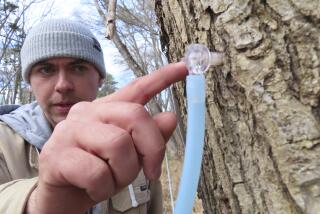Hawaii’s sugar history makes for one sweet island tour
A new tour on Oahu takes visitors back to Hawaii’s sweetest century. From 1850 to 1950, sugar was king, a crop that brought thousands of workers from several Asian countries, as well as Puerto Rico and Portugal, to the state’s cane fields and mills.
Roberts Hawaii, the state’s largest tour operator, takes visitors from Waikiki to Hawaii’s Plantation Village, near the town of Waipahu, which features restored buildings and replicas of the buildings that once housed laborers. Guides tell the story of the sugar years and show visitors a small stand of sugar cane that still remains.
Maui restaurants: 20 great places to eat for under $20 »
On Oahu, 20 places for great meals for less than $20 »

And then there are tasting stops, too: first at the Malasadamobile, operated by Leonard’s, an iconic Honolulu bakery, for a sweet treat. The bakery since 1953 has specialized in malasadas, which are known as Portuguese doughnuts. Recipes for the doughnuts — fried without a hole and then covered in sugar — were brought to the islands by immigrants who toiled in the sugar fields.

The final stop is at KoHana Rum near the village of Kunia, where visitors learn how sugar cane is used to make rum.
The tour includes the tasting room, where grownups can sample Rhum agricole, as it’s called, made from freshly squeezed sugar cane juice instead of molasses.
Oahu Sugar Tours, offered Tuesdays, Thursdays and Saturdays, pick up visitors from Waikiki hotels starting at 8 a.m. Tickets cost $118 for adults and children at least 12 years old, and $89 for children 4 to 11 years old.
Even after the sugar fields fell fallow in the 20th century, thanks to cheaper sugar sources elsewhere, many descendants of the original immigrants still live in the same communities as their ancestors.
One such town, Haleiwa, on the island’s North Shore, has reinvented itself as a popular tourist destination, with surfers and sun seekers drawn to its broad beaches. Others, such as Honokaa, an hour’s drive north from Hilo on the island of Hawaii, retain a sleepier vibe than in the era when sugar reigned.
Info: Roberts Hawaii
More to Read
Sign up for The Wild
We’ll help you find the best places to hike, bike and run, as well as the perfect silent spots for meditation and yoga.
You may occasionally receive promotional content from the Los Angeles Times.






